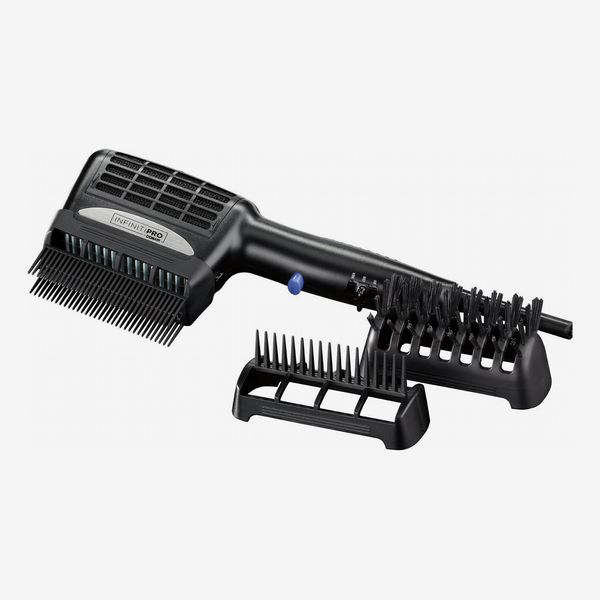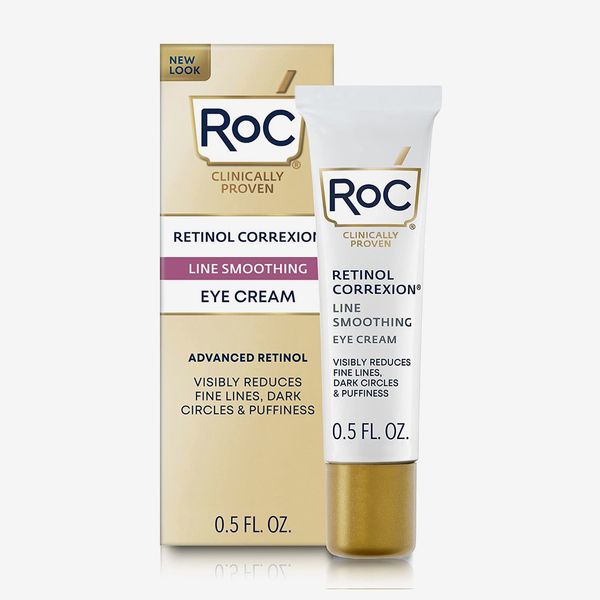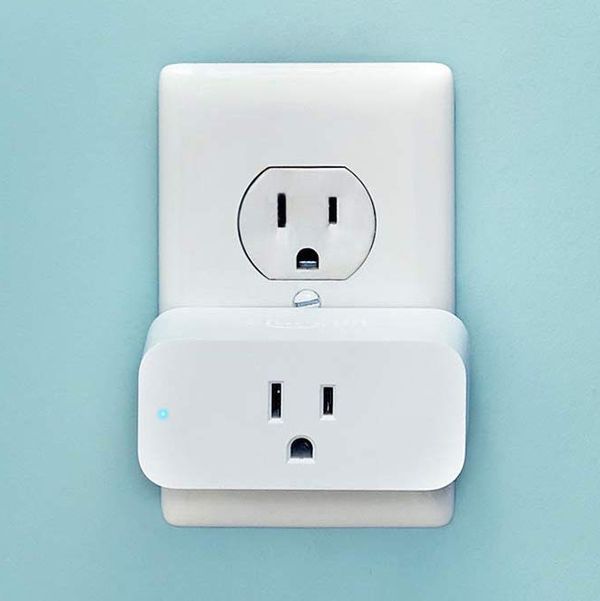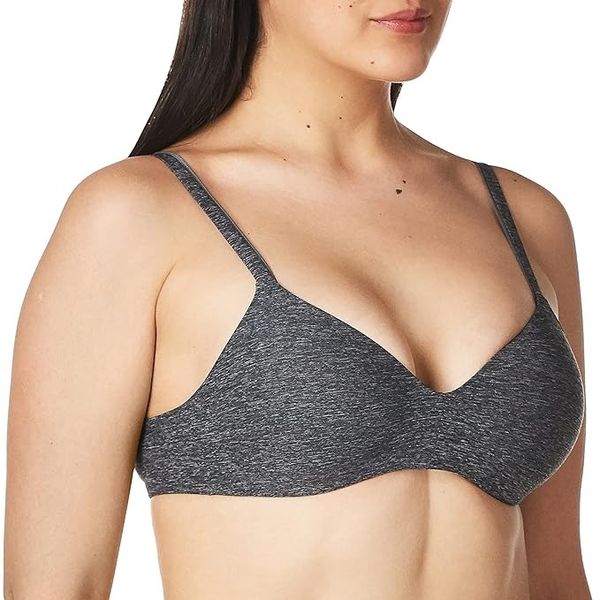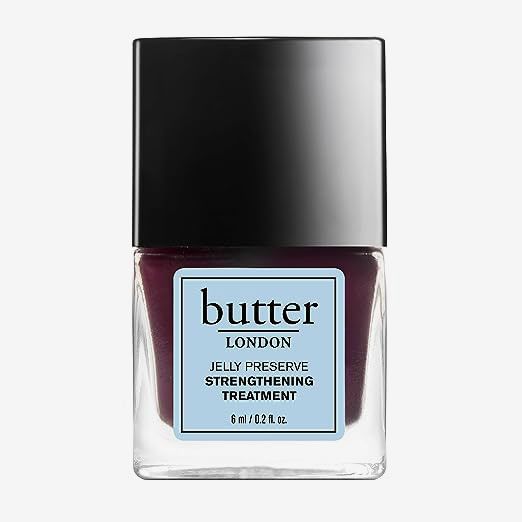In this article
According to dentist and American Dental Association (ADA) spokesperson Dr. Ada Cooper, a manual toothbrush actually can deliver the same dental hygiene benefits as an electric toothbrush. But many dentists believe the latter to have a slight edge. One independent study, showed that electric toothbrushes are better at reducing plaque and gingivitis and, according to dentist and vice-president of clinical development at Tend, Marc Schlenoff, they help lessen the force put into cleaning teeth and gums, reducing the risk of gum recession and wearing away tooth structure. Though, both manual and electric toothbrushes have to be used correctly to be effective. “You just angle it at a 45 degree angle, sweep back and forth, and brush down covering all the surfaces of the teeth,” says Dr. Cooper. “With that degree of attention, brushing for two minutes twice a day, you’ll be just fine.” Cosmetic and reconstructive dentist Dr. Lior Tamir’s “best tip” is to not neglect the backside of teeth, especially along the lower jaw behind the tongue. “That’s usually a problem area for many patients,” he says.
As the Strategist’s personal hygiene writer, I find that electric toothbrushes beat out manual ones because they’re more enjoyable to use and I like knowing I’m getting a good brush in every time. Some features I’ve found most helpful are quadrant timers (more on that below) and apps that track where you could brush better. If you’re shopping around, the best place to start is by making sure the toothbrush has an ADA Seal of Acceptance. “The seal of acceptance says that a product does what it says it does and is safe and effective when used as directed,” says dentist and ADA consumer adviser Matt Messina. After that, you shouldn’t really stress — at least not when it comes to picking among dentist-approved electric options. Sonya Krasilnikov, a dentist and co-founder of Dental House, says, “Choosing between Sonicare and Oral-B is like picking between a Mercedes and BMW. It’s mostly personal preference.” Since the differences can be so subtle, I asked 16 dentists to break down their picks for the best electric models and I tested out three of those picks below.
What we’re looking for
Brush movement
Electric toothbrushes tend to fall into three camps: rotating, oscillating, and sonic. “Rotating or rotary toothbrushes have small circular heads that rotate back and forth to clean each tooth, and there’s sonic toothbrushes that have vibrating brush heads that move the bristles side to side at really high speeds, sometimes up to frequencies of 50,000 movements per minute,” says Dr.Cooper. Sometimes you will hear oscillating and rotating used interchangeably because they both refer to the actual movement of the bristles — unlike sonic which refers to the vibration of bristles — but rotating indicates movement in a circle while oscillating refers to a side to side motion. Some dentists say that one isn’t necessarily better than the other, while others appreciate the power of sonic slightly more. Dentist Sharon Huang of Les Belles NYC explains that sonic toothbrushes use a sonic wave to dislodge debris all on its own, which she likes because it requires less force to get the job done. “The rotation mechanism, you actually have to touch the tooth and it’s rotating and it’s helping you clean it,” she says. “The sonic toothbrush has a sonic wave. So if you’re in the vicinity, and you’re not even touching your tooth, it’s supposed to be dislodging bacteria.” The sweet spot is a toothbrush that does it all, but orthodontist Janet Stoess-Allen, says that because teeth are curved, “rotating heads are more effective in getting to all sides of them.”
Bristles
“Hard-bristled toothbrushes are wonderful if you’re going to clean the grout from your bathroom tile, but they’re not for use in the mouth,” says Messina, who explains that harder bristles can damage gums and enamel. Every expert we spoke with said a soft-bristle brush was the way to go in all cases, but especially if you have sensitive teeth and gums.
Pressure sensor
Brushing too hard can be just as damaging as brushing with too hard of bristles, which is why dentist Inna Chern likes brushes with pressure sensors that beep or stop moving when you’re being too aggressive to “eliminate the possibility of overzealous brushing.” A pressure sensor shouldn’t make or break your decision when deciding on what brush to go with, but Huang does think it’s a good idea for people switching from a manual brushes to an electric one for the first time who might be used to be putting some extra umph behind their strokes, which electric toothbrushes don’t require.
Timer
Built-in timers are more standard than pressure sensors and a little more essential. Leonard Umanoff of Brooklyn-based LuxDen, recommends toothbrushes that have a built-in timer, as this helps make sure you’re brushing long enough to adequately get rid of plaque. Some will just run for the recommended two minutes, while others have a quadrant timer that will alert every 30 seconds when it’s time to move to the next quadrant of your mouth.
Brush head size
The consensus is that the smaller the brush head the better. Chern says it’s a good pick “if your mouth is on the smaller side or you have gagging issues.” It also makes it easier to reach your molars, a hard to clean area that people often miss, according to Dentist Hemita Klose of West Village Dental Studio. There are a few cases where a larger head might be better. Orthodontist Heather Kunen reminds us that a toothbrush is only as good as it’s operator, so for brushers who are less meticulous about moving a small brush around every corner of each tooth, they’ll benefit from a broader head.
Best overall electric toothbrush
Brush movement: Rotating, oscillating, and sonic | Soft bristles: Yes | Pressure sensor: Yes | Timer: Yes | Brush head size | Small
Cosmetic dentist Lana Rozenberg likes that Oral-B brushes generally “have more features” and are “more advanced than the others.” They have a slight edge over other popular electric toothbrushes because they rotate, oscillate, and pulsate (or vibrate) combining all three technologies. This brush specifically can rotate 44,000 times per minute, which dentist Jonathan Levine says causes “a lot of disruption of plaque.” According to the brand’s website, all their round toothbrush heads rotate 45 degrees to the right and back, to 45 degrees to the left, as well as oscillate back and forth. Oral-B brushes are also known for their small round heads which allows them to get around each tooth, which is only aided by the rotation of the brush head.
While this is a pretty basic and affordable entry-level electric toothbrush (high-end models could run you upwards of $300), it still has all the main features dentists recommend. It’s why I bought myself this toothbrush back in 2020, when I first upgraded from my manual one. (I’ve since upgraded again — more on that, below.) It has soft bristles and a pressure sensor that stops the pulsation, both of which came in handy for me since I often brush too hard. The best part was its built-in two-minute quadrant timer that vibrates every 30 seconds, letting me know it was time to move on to the next area of my mouth.
Best less-expensive electric toothbrush
Brush movement: Rotating and oscillating | Soft bristles: Yes | Pressure sensor: No | Timer: No | Brush head size: Large
If you want to try out an electric toothbrush without dropping a lot of cash, this is one of the few ADA-approved models you’ll find in the drugstore. It has no timer or pressure sensor, but Levine says it’s “a good starting point, good for travel, and better than manual.” The brush head moves in two directions: The top part rotates in a circle while the bottom bristles oscillate up and down. You’ll have to keep track of your brushing time on your own, and make sure you aren’t brushing too hard, but the bristles are at least soft. They also change color when it’s time for a new head. This brush is battery-operated, which certainly has its cons, but, as opposed to others on this list that will just be dead when their internal battery dies, this toothbrush’s AA batteries are at least replaceable. That might be the only thing you can fix though. Low-cost brushes tend to be “disposable in the sense that you’ve got plastic mechanical parts … and those will wear out,” Messina says.
Best app-enabled electric toothbrush
Brush movement: Rotating, oscillating, and sonic | Soft bristles: Yes | Pressure sensor: Yes | Timer: Yes | Brush head size: Small
I upgraded from my Oral-B Pro 1000 to its newer iO Series toothbrush about a year ago. Off the bat, it’s a much sleeker model, with its OLED display on the brush handle and magnetic charging stand, but its souped-up features stand out most. Like the Pro 1000, it combines rotating, oscillating, and sonic technology, plus a two-minute quadrant timer to make sure you’re brushing the right amount of time. Rather than one mode, it comes with seven: daily clean, gum care, sensitive, super-sensitive, whitening, intense, and tongue clean. I personally use the two-minute daily-clean setting twice a day, which leaves my teeth feeling squeaky clean. And the less-intense 30-second tongue-clean mode got me in the habit of brushing my tongue more regularly (I try to use it at least every other day). I now have fresher breath than when I was brushing my teeth and swishing around mouthwash. The toothbrush’s pressure sensor is more advanced, too. A light at the top of the brush turns red if you’re brushing too hard, white if you’re not brushing hard enough, and green if you’re brushing just right. What I found most helpful, however, is the app it uses to track brushing habits. The toothbrush uses an AI technology called 3D Tracking to show real-time feedback on the app: a rendering of your teeth progressively gets whiter until it tells you that section is fully cleaned. Over time, you can see your progress on the app too. It tells you which spots you frequently miss, so you can easily change bad brushing habits. While it is pricey, I think it’s worth a splurge if you’re wanting a high-tech option.
Best less-expensive app-enabled electric toothbrush
Brush movement: Rotating, oscillating, and sonic | Soft bristles: Yes | Pressure sensor: Yes | Timer: Yes | Brush head size: Small
For $70 less, Strategist associate editor Jenna Milliner-Waddell recommends the slightly older Oral-B 8000. It also features a light-up pressure sensor that turns red if you’re brushing too hard and Bluetooth technology for real-time feedback on your brushing habits. Rather than an AI technology that the iO uses, the 8000 relies on using your phone’s front-facing camera. You can easily see the diagnostic report using the included phone holder that suctions onto the mirror. This brush also comes with a charging case, and has six different cleaning modes. And it has a charging dock that has room for additional brush heads. All of these features made this toothbrush a standout to Pia Lieb, founder of Cosmetic Dentistry Center NYC. She’s particularly a fan of the app. “Having the app really does work because it makes you self-conscious of really brushing for two full minutes,” says Lieb, who says that most people don’t come close to the recommended time on their own.
Best Sonicare toothbrush
Brush movement: Oscillating and sonic | Soft bristles: Yes | Pressure sensor: Yes | Timer: Yes | Brush head size: Large
Our best overall pick is an Oral-B, but for those who want to go with the other major player in the space, Sonicare, we’ve found the best option for you, too. Sonicare brushes are distinguishable from Oral-B brushes mainly by the brush head. They’re large and flat compared to Oral-B’s small round brushes and long-lasting, according to Wellspring Dental dentist Mandy Nebel, who says she prefers Sonicare over other brands. They don’t rotate, but instead move the bristles from side to side and “use more of an ultrasonic vibrational energy to disrupt the plaque,” Levine says. Chern likes that “the sonic power helps to shake off plaque and tartar, aiding in the removal of these gingivitis-causing, bacteria-holding compounds.” This specific model is a more entry-level Sonicare, but only one of two from the brand accepted by the ADA. It’s similar to the entry-level Oral-B above, our overall pick, as it has all the basics and few extras. It features a timer, a pressure sensor, and dentist-recommended soft bristles. Krasilnikov says, “While the bristles only sweep back and forth, the brush sends out vibrations that are designed to break up particles and debris and allow toothpaste and fluids to access hard-to-reach places.” The bonus? This brush also has a light that tells you when to replace the head.
Best electric toothbrush with long battery life
Brush movement: Sonic | Soft bristles: Yes | Pressure sensor: No | Timer: Yes | Brush head size: Large
This toothbrush has a large long head similar to Sonicare’s brushes. It doesn’t have the name recognition of some of the bigger brands, but the Pro-Sys sonic brush is marketed to dentists and many sell it directly to patients in their offices, Levine says. “It’s a very good brush and half the price of the expensive ones,” he says. “It has very, very soft bristles and a very nice ovaline head, so it does a good job of getting way back into the mouth.” It comes with five different brush heads, all some variation of soft, making it safe for even the most sensitive teeth and dental implants. There are also five different levels of cleaning power, meaning there are 25 potential settings on this toothbrush, a selling point for dentist Yuliya Rabinovich of Dental Muse. The biggest standout feature to me is the battery life. While most toothbrushes on this list will last for about two weeks on one charge, this one can go for about a month. If you travel often, or just forget to plug yours in, you’ll rarely have to worry about the Pro-Sys toothbrush dying on you or traveling with your charger.
Best electric toothbrush/water flosser combo
Brush movement: Sonic | Soft bristles: Yes | Pressure sensor: Yes | Timer: Yes | Brush head size: Large
If you’re shopping for an electric toothbrush and a water flosser, consider this two-in-one model that combines the best of both devices. It has three functions — brushing, flossing, and both — and two brush speeds. Compared to regular flossing, water flossing is “less technique-sensitive,” says dentist Jill Lasky, so it can work well for those with limited mobility or certain dental work, like braces or implants. And it even “removes the harmful bacteria and debris deep between teeth and below the gumline that traditional brushing and dental floss can’t reach,” says Dr. Jacqueline Fulop-Goodling, an orthodontist at New York’s Dr. Smiles. But while it shouldn’t replace traditional flossing, it’s the next best thing, says Rabinovich, who uses one herself and recommends it to patients. She even says that after using it, her mouth feels like “I just had my hygienist go at it.”
Best less expensive electric toothbrush/water flosser combo
Brush movement: Sonic | Soft bristles: Yes | Pressure sensor: Yes | Timer: Yes | Brush head size: Large
This two-in-one flosser and toothbrush system recommended by Dr. Elisa Mello, owner of NYC Smile Design, is about $50 cheaper than the Fusion Professional model above. You won’t get the same convenience of water flossing and brushing at the same time, but if you’re looking for an all-in-one device where you have options to do both, this is a great affordable model. The brush has three sonic modes (clean, whiten, and massage for gum stimulation) and three speeds, so it actually has more brushing options than the Fusion. The flosser itself has ten different pressure settings, ranging from 10 to 100 psi, and the 22-ounce tank holds enough water to run for 90 seconds. And while the toothbrush has a two-minute quadrant timer, the flosser does not.
Nicest-looking electric toothbrush
Brush movement: Oscillating | Soft bristles: Yes | Pressure sensor: No | Timer: Yes | Brush head size: Small
For better or worse, your toothbrush doubles as bathroom décor. Keeping it out might help you remember to use it twice a day, but a bacteria-collecting, sometimes clunky and in-the-way toothbrush is a permanent fixture on your countertop. Having one you won’t mind looking at every day is a good idea. Cosmetic dentist Stephanie Dumanian of Park Lex 60 Dental says the colors of this toothbrush from start-up brand Goby are “like eye candy for your bathroom counter.” This monochrome line has a sleek look and comes in this fun pink colorway. It’s not just nice to look at, though: “The oscillating head provides a deeper clean than most entry-level toothbrushes,” she says. “And the subscription service takes the guesswork out of when to change the toothbrush head out so you don’t have to worry about overgrowth of bacteria.” Even if you don’t opt into the subscription service, the Goby brush’s power button lights up when it’s time to replace the head. It also has a small round brush head, similar to Oral-B’s, with soft bristles and a built-in quadrant timer.
Best electric toothbrushes for kids
Brush movement: Rotating and oscillating | Soft bristles: Yes | Pressure sensor: No | Timer: Yes | Brush head size: Small
Generally, you’ll want to wait to introduce kids to electric toothbrushes since toddlers’ gums may be too tender for bristles, Rabinovich tells us. Usually, kids’ electric toothbrushes are marketed for ages 3 and up, but Rabinovich recommends them for those older than 5. If you’re having trouble acclimating your kid to an electric toothbrush, Dr. Rashmi Ambewadikar of Astoria Smiles Pediatric Dentistry recommends starting with front teeth and moving toward the back to avoid gagging and the feeling of vibration on the tongue, and brushing small sections at a time to give them breaks. Steven C. Cohen of Livingston Smiles and Rabinovich both advise going with a brush with their favorite character or cartoons. “Are they in a Disney Princess or PAW Patrol stage? Kids are more likely to use a toothbrush with their favorite characters on it,” Rabinovich says. Cohen approves of Oral-B’s collection of kids’ brushes. This one is rechargeable and has a sensitive brush head with soft bristles and a built-in timer.
Best less-expensive toothbrush for kids
Brush movement: Sonic | Soft bristles: Yes | Pressure sensor: No | Timer: Yes | Brush head size: Small
Quip, a start-up toothbrush company, is known for making sleek-looking, minimalist toothbrushes at an affordable price. Rabinovich’s kids use the brand’s kids’ toothbrush, which “does offer some ultrasonic vibration, but it’s not overwhelming” for teeth that are still growing. I’ve tried the brand’s regular toothbrush in the past and can say it’s much gentler than the other ones I’ve tried on this list, but my teeth always felt clean after using it. Rabinovich says that’s because its soft bristles are surrounded by rubber massagers, which are gentler on tender gums with loose and erupting teeth. “And the subscription service for replacement heads and batteries means one less thing for me to remember to do as a parent,” Rabinovich adds. Dr. Ambewadikar also recommends Quip’s brushes for kids because its smaller handle is easier to grip. Another major benefit I found is that it doesn’t require a charging base and frees up counter space — something families sharing a bathroom might appreciate. Bonus: It comes in four bright, kid-friendly colors: blue, pink, purple, and green.
Some more electric toothbrushes we’ve written about
Our experts
• Inna Chern, dentist and founder of New York General Dentistry
• Steven C. Cohen, dentist at Livingston Smiles
• Ada Cooper, dentist and ADA spokesperson
• Stephanie Dumanian, owner of Park Lex 60 Dental
• Sharon Huang, dentist and founder of Les Belles NYC
• Hemita Klose, dentist at West Village Dental Studio
• Sonya Krasilnikov, dentist and co-founder of Dental House
• Heather Kunen, orthodontist at Linhart Dentistry
• Jonathan Levine, dentist and CEO of JBL New York City
• Pia Lieb, founder of Cosmetic Dentistry Center NYC
• Matt Messina, dentist and ADA consumer adviser
• Yuliya Rabinovich, owner of Dental Muse
• Lana Rozenberg, cosmetic dentist and founder of Rozenberg Dental NYC
• Marc Schlenoff, dentist and vice-president of clinical development at Tend
• Janet Stoess-Allen, orthodontist and owner of Park Avenue Orthodntics
• Leonard Umanoff, dentist and founder of LuxDen
• Jill Lasky, dentist at Lasky Pediatric Dental
• Mandy Nebel, dentist at Wellspring Dental
• Dr. Jacqueline Fulop-Goodling, orthodontist at Dr. Smiles
• Jenna Milliner-Waddell, Strategist associate editor
The Strategist is designed to surface the most useful, expert recommendations for things to buy across the vast e-commerce landscape. Some of our latest conquests include the best acne treatments, rolling luggage, pillows for side sleepers, natural anxiety remedies, and bath towels. We update links when possible, but note that deals can expire and all prices are subject to change.
